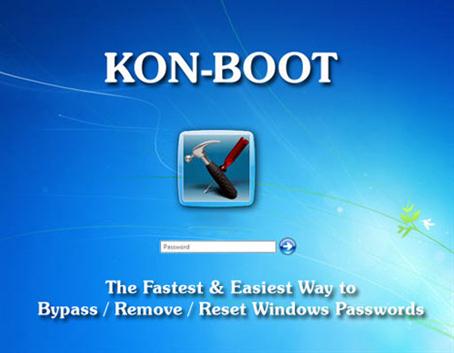

The main idea was to allow users to login to the target computer without knowing the correct password and without making any persistent changes to system on which it is executed.įirst Kon-Boot release was announced in 2008 on DailyDave mailing list.

Instead, you might see a Legacy boot option, or something similar in its place.Kon-Boot was originally designed as a proof of concept, freeware security tool, mostly for people who tend to forget their passwords. In some cases, you may not see a Secure Boot option. It may be called something else, or the Secure Boot option may be under a different tab altogether.
 When you next boot to BIOS, you will see UEFI BIOS.īIOS settings are never the same for different systems and device manufacturers. If you need to go back to UEFI BIOS, all you have to do is enable Secure Boot from Legacy BIOS. Tap the F10 key to save the changes and Exit BIOS. Go to the Boot tab (may differ based on your BIOS layout). If the F2 key doesn’t work, check how you can access BIOS for your PC here. Turn the system On and tap the F2 key to boot to BIOS. Everything you need is already on your system and you only need to know which setting needs to be changed. There are no complicated tools involved in doing this. In this case, you can switch UEFI BIOS to Legacy BIOS. These exceptions may require that you have Legacy BIOS instead of UEFI BIOS e.g., if you’re trying to install a Linux distro that won’t install on UEFI BIOS. Modern operating systems prefer UEF BIOS however there will be exceptions. While UEFI BIOS is the new file system that is used on modern desktops and laptops. For end-users, the difference is that UEFI BIOS is more secure. There’s quite a bit of difference between the two if you’re a desktop/laptop/computer component manufacturer. The UEFI BIOS has replaced the old BIOS which we now refer to as Legacy BIOS. Since not many users interact with this file system, they may not know that BIOS has been replaced on many systems with UEFI BIOS. Most users won’t interact with it much because it doesn’t appear if an operating system is installed. This file system can control some hardware components at a basic level, and it allows you to make changes to the system such as setting a password before you can see the boot screen of the OS that’s installed.įor a long time, this file system has been referred to as BIOS. All computers come with a basic file system loaded on to the memory.
When you next boot to BIOS, you will see UEFI BIOS.īIOS settings are never the same for different systems and device manufacturers. If you need to go back to UEFI BIOS, all you have to do is enable Secure Boot from Legacy BIOS. Tap the F10 key to save the changes and Exit BIOS. Go to the Boot tab (may differ based on your BIOS layout). If the F2 key doesn’t work, check how you can access BIOS for your PC here. Turn the system On and tap the F2 key to boot to BIOS. Everything you need is already on your system and you only need to know which setting needs to be changed. There are no complicated tools involved in doing this. In this case, you can switch UEFI BIOS to Legacy BIOS. These exceptions may require that you have Legacy BIOS instead of UEFI BIOS e.g., if you’re trying to install a Linux distro that won’t install on UEFI BIOS. Modern operating systems prefer UEF BIOS however there will be exceptions. While UEFI BIOS is the new file system that is used on modern desktops and laptops. For end-users, the difference is that UEFI BIOS is more secure. There’s quite a bit of difference between the two if you’re a desktop/laptop/computer component manufacturer. The UEFI BIOS has replaced the old BIOS which we now refer to as Legacy BIOS. Since not many users interact with this file system, they may not know that BIOS has been replaced on many systems with UEFI BIOS. Most users won’t interact with it much because it doesn’t appear if an operating system is installed. This file system can control some hardware components at a basic level, and it allows you to make changes to the system such as setting a password before you can see the boot screen of the OS that’s installed.įor a long time, this file system has been referred to as BIOS. All computers come with a basic file system loaded on to the memory.







 0 kommentar(er)
0 kommentar(er)
